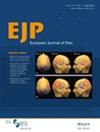Evaluating multiplicity reporting in analgesic clinical trials: An analytical review
Abstract
Background and Objectives
Analgesia trials often demands multiple comparisons to assess various treatment arms, outcomes, or repeated assessments. These multiple comparisons risk inflating the false positive rate. Multiplicity correction in recent analgesic randomized controlled trials (RCTs) remains unclear despite statistical method advancements and regulatory guidelines. Our study aimed to identify reporting inadequacies in multiple analysis adjustments and explanations to understand these deficiencies.
Databases and Data Treatment
This review analysed RCTs from the European Journal of Pain, the Journal of Pain, and PAIN, published between January 2018 and December 2022. We included randomized, double-blind trials focusing on pain outcomes. Data extraction, managed by three researchers using predefined criteria, included trial characteristics, multiplicity presence, and correction methods. Descriptive statistical analyses included Fisher's exact, and Holm method for multiple comparisons.
Results
Out of 112 articles, 48 pre-specified a primary analysis plan. Multiple analyses were observed in 65 articles, with 60% adjusting for all comparisons, primarily using the Bonferroni method. Compared with previous studies, no significant changes in multiplicity correction practices were noted when stratified by trial type, size, and sponsor.
Conclusions
The study reveals a persistent reliance on multiple comparisons in analgesic clinical trials without a corresponding increase in multiplicity corrections emphasizing a need for enhanced reporting and implementation of statistical adjustments. We acknowledge limitations in categorizing studies, the use of a surrogate for the trial stage, and sourcing data from journal webpages rather than a database.
Significance Statement
This study flags inadequate reporting on multiplicity correction in analgesic trials, stressing the risk of false positives and the urgent need for enhanced reporting to boost reproducibility.

 求助内容:
求助内容: 应助结果提醒方式:
应助结果提醒方式:


